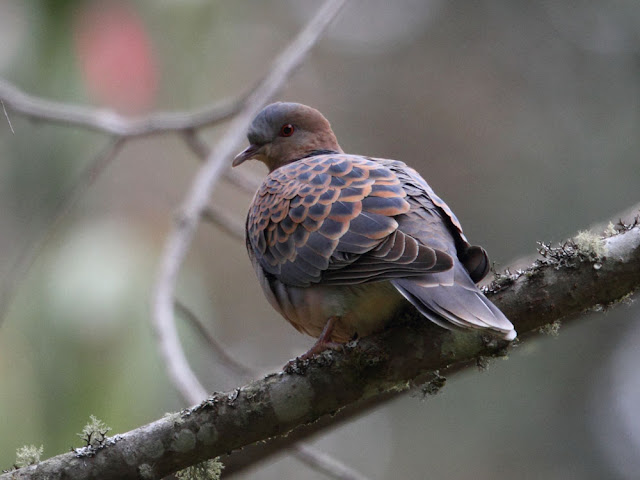Our holiday in Nepal London to Delhi , a three hour stopover followed by a short 1½ hour flight to Kathmandu . Strangely, India is 5½ hours ahead of us and Nepal
Anyway, we got to Kathmandu at about 7 PM which was about 1.15 in the afternoon in London
Birdwatching holidays always involve getting up very early and this one was no exception. A call at 05.30 followed by a quick breakfast saw us on the road by 06.30 heading towards Phulchowky, a ‘hill’ near Kathmandu . Anything lower than 6000m in Nepal
Although I had been to Nepal
From the van we took in the essentials of Kathmandu . The roads were basic and not always complete. Some were very wide but only the centre third was paved. There were many, many motorcycles on the roads. Traffic was chaotic. There seemed to be no rules at all! Traffic drove more or less on the left, as in England
A great deal of trade obviously took place in the streets which were bustling with people. It was very interesting.
 |
| Typical Kathmandu street |
 |
| Mains electricity cables, Kathmandu. |
Transport by scooter or motor-bike was fascinating. On any 2-seater you might have two people:
or even on a scooter:
Five? No, that would just be silly!
On this particular outing to Phulchowky we picked up a policeman for protection. This surprised me and was mildly unsettling, but Suchit said there had been one or two incidents of muggings in the past and they didn't want to take any chances. We soon got into the swing of things. Because we haven't really been East before, many of the birds were completely new to us. While travelling through Kathmandu the most common birds were house sparrows, tree sparrows (yes we do have those) house crow and black kite. In Phulchowky we started with blue throated barbets, great barbets, whistling thrush, minivets, etc.
 |
| Oriental turtle dove |
 |
| Green-tailed sunbird |
 |
| Fire-breasted flowerpecker |
Suchit proved to be a very experienced guide who spoke excellent English. Our two companions were also most amiable and it was clear that the trip was going to be very pleasant.
We made our way back to Kathmandu. After dinner we packed our cases, ready for the flight to Koshi the next morning.
TBC
We made our way back to Kathmandu. After dinner we packed our cases, ready for the flight to Koshi the next morning.
TBC






No comments:
Post a Comment
Welcome. If you have a Google or Gmail account, use this form to comment on any blog posting. Comments are moderated first so there will be a short delay before they appear.